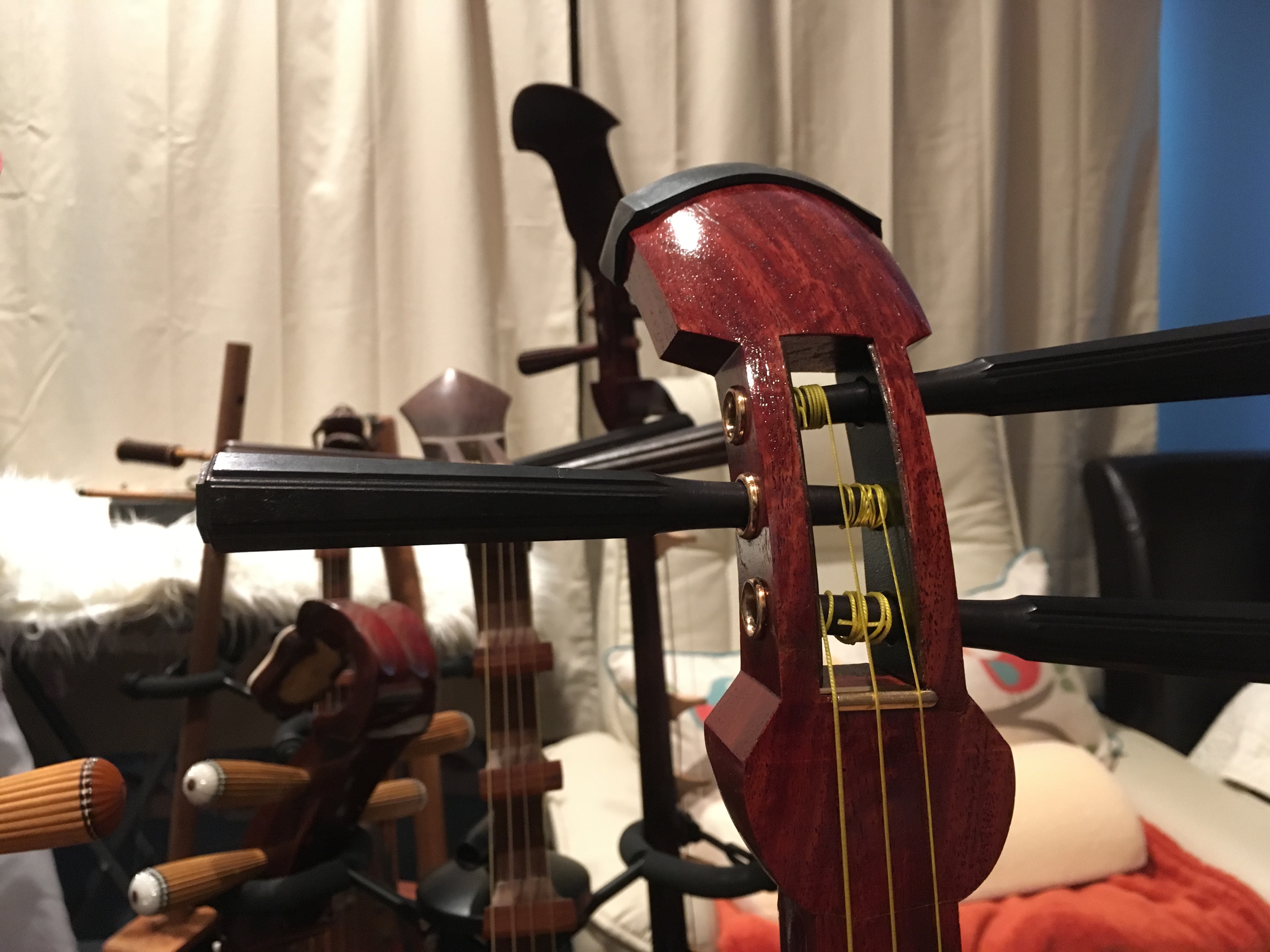Besides DIY, I have been collecting antique and vintage instruments (my favorites) or discounted, broken “you-fix-it” , and salvaging many “junk” projects. I’ve completed two more: “Redhead” that had As-Is a broken head/tenjin, and “Zorro” with a sliced up skin then arrived with shipment damage with broken neck/sao and tailpiece(?)/nakago.
“REDHEAD” project (fixing broken head and using Formica support braces)
Since I was naive with little hands-on with shamisen, I thought Redhead would be great for parts—using its body/dou with two good skins and all the accessories. I tried Redhead’s dou with other sao, and yes, unfortunately did not fit at all or poorly- wobbly and wrong angle. I had already re-fitted a mismatch as my first shamisen project. Although definitely do-able, it was a lot of time and labor. So looking at the snapped tenjin, I thought I could fix the head. After wood glue and clamping, it was not bad. But structurally, I didn’t like how it fractured, imagining stress as you tighten strings over time. So I installed two braces made of thin laminate (plastic Formica). I got the Formica as free color sample in the kitchen countertop dept. Trace; rough cut the shape; make holes for the pegs/itomaki; file or grind to soften edges and to make a better fit. For holes, I used a Forstner bit with power drill, which was good; and I used a bamboo boring bit (metric-sized specialty bit in Japanese woodworking or bamboo shops), which I won’t use again because the bit is very expensive and I need them good for making bamboo flutes and other things. Formica is hard, so it can chip and fly out when you cut (jeweler’s saw is better but I was lazy and used Japanese garden steel snips, and very careful with my fingers to keep all of my skin); and the dust is irritating like pepper spray, so I quickly put on a dusk mask (haha, upside down) and eye/face protection. I glued the Formica braces in place. I thought about wood but I didn’t have any thin pieces handy. Formica is probably thinner, comes in colors for decorative touch, can be shaped, and I had it available. I used water putty to fill and patch holes since it was a small amount (or you can also use wood fill with hardeners, or pre-made wood fill). Water Putty doesn’t take on much wood stain; but I did use Sedona Red stain then Mahogany gel stain just to add some color, esp.to eliminate the light-colored dust that settled in the wood channels during sanding. A touch-up color pencil for fixing furniture scratches can be used later, to color match the putty patches. Light sand before the final finish, a thin coat of clear gloss lacquer spray. Final fitting was really tight, and I probably should have fixed that. Instead, I was gentle and persistent with soft taps using a big cotton gong mallet and weighted rubber mallets… tap tap tap tap (maybe that is how the head got broken?). Now fixed, Redhead shamisen joins other rehabbed Far East instruments!
Redhead repair photos:

